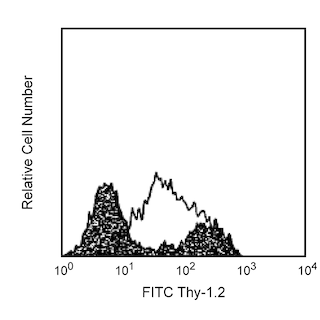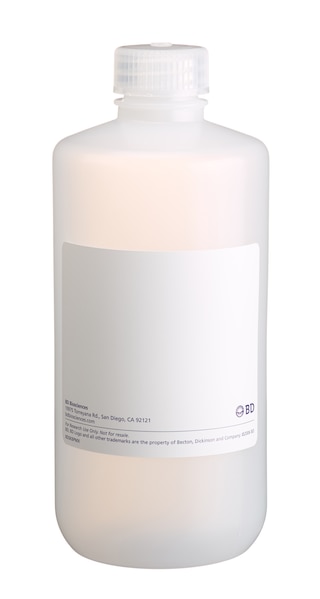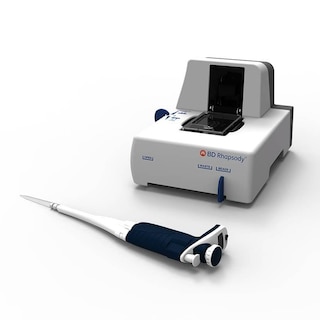-
Reagents
- Flow Cytometry Reagents
-
Western Blotting and Molecular Reagents
- Immunoassay Reagents
-
Single-Cell Multiomics Reagents
- BD® OMICS-Guard Sample Preservation Buffer
- BD® AbSeq Assay
- BD® Single-Cell Multiplexing Kit
- BD Rhapsody™ ATAC-Seq Assays
- BD Rhapsody™ Whole Transcriptome Analysis (WTA) Amplification Kit
- BD Rhapsody™ TCR/BCR Next Multiomic Assays
- BD Rhapsody™ Targeted mRNA Kits
- BD Rhapsody™ Accessory Kits
- BD® OMICS-One Protein Panels
-
Functional Assays
-
Microscopy and Imaging Reagents
-
Cell Preparation and Separation Reagents
-
- BD® OMICS-Guard Sample Preservation Buffer
- BD® AbSeq Assay
- BD® Single-Cell Multiplexing Kit
- BD Rhapsody™ ATAC-Seq Assays
- BD Rhapsody™ Whole Transcriptome Analysis (WTA) Amplification Kit
- BD Rhapsody™ TCR/BCR Next Multiomic Assays
- BD Rhapsody™ Targeted mRNA Kits
- BD Rhapsody™ Accessory Kits
- BD® OMICS-One Protein Panels
- Ireland (English)
-
Change country/language
Old Browser
This page has been recently translated and is available in French now.
Looks like you're visiting us from United States.
Would you like to stay on the current country site or be switched to your country?
BD™ AbSeq Oligo Mouse Anti-Mouse CD286 (TLR6)
Clone C1N2 (RUO)


Regulatory Status Legend
Any use of products other than the permitted use without the express written authorization of Becton, Dickinson and Company is strictly prohibited.
Preparation And Storage
Recommended Assay Procedures
Put all BD® AbSeq Reagents to be pooled into a Latch Rack for 500 µL Tubes (Thermo Fisher Scientific Cat. No. 4900). Arrange the tubes so that they can be easily uncapped and re-capped with an 8-Channel Screw Cap Tube Capper (Thermo Fisher Scientific Cat. No. 4105MAT) and the reagents aliquoted with a multi-channel pipette.
BD® AbSeq tubes should be centrifuged for ≥ 30 seconds at 400 × g to ensure removal of any content in the cap/tube threads prior to the first opening.
Product Notices
- This reagent has been pre-diluted for use at the recommended volume per test. Typical use is 2 µl for 1 × 10^6 cells in a 200-µl staining reaction.
- Source of all serum proteins is from USDA inspected abattoirs located in the United States.
- Caution: Sodium azide yields highly toxic hydrazoic acid under acidic conditions. Dilute azide compounds in running water before discarding to avoid accumulation of potentially explosive deposits in plumbing.
- The production process underwent stringent testing and validation to assure that it generates a high-quality conjugate with consistent performance and specific binding activity. However, verification testing has not been performed on all conjugate lots.
- Illumina is a trademark of Illumina, Inc.
- Please refer to http://regdocs.bd.com to access safety data sheets (SDS).
- Please refer to bd.com/genomics-resources for technical protocols.
- For U.S. patents that may apply, see bd.com/patents.
Data Sheets
Companion Products






Recently Viewed
The C1N2 monoclonal antibody specifically binds to the Toll-like receptor 6 (TLR6), which is also known as CD286. CD286 belongs to the mammalian toll-like family of pattern recognition receptors (TLR) that participate in inducing innate immune responses to microbial pathogens. CD286 is a type I transmembrane glycoprotein comprised of an extracellular domain with a large number of leucinerich repeats (LRRs) and a cytoplasmic region with a signaling Toll/Interleukin-1 Receptor (TIR) domain. TLR6 is differentially expressed on the surface and intracellular compartments, including endolysosomes, of pre-B cells as well as immature or mature B cells. It is likewise expressed by monocytes, macrophages, or plasmacytoid, CD4+, or CD8+ dendritic cells. In association with TLR2 (CD282), CD286 recognizes microbial diacylated lipopeptides, lipoteichoic acid, and zymosan. The CD282/CD286 (TLR2/TLR60 heterodimer then transduces signaling responses leading to the production of proinflammatory cytokines by responding cells.
Development References (5)
-
Kang JY, Lee JO. Structural biology of the Toll-like receptor family.. Annu Rev Biochem. 2011; 80:917-41. (Biology). View Reference
-
Marinho FA, de Paula RR, Mendes AC, et al. Toll-like receptor 6 senses Mycobacterium avium and is required for efficient control of mycobacterial infection.. Eur J Immunol. 2013; 43(9):2373-85. (Biology). View Reference
-
Motoi Y, Shibata T, Takahashi K, et al. Lipopeptides are signaled by Toll-like receptor 1, 2 and 6 in endolysosomes.. Int Immunol. 2014; 26(10):563-73. (Immunogen: Flow cytometry, Immunoprecipitation). View Reference
-
Takeuchi O, Kawai T, Sanjo H, et al. TLR6: A novel member of an expanding toll-like receptor family. Gene. 1999; 231(1-2):59-65. (Biology). View Reference
-
de Almeida LA, Macedo GC, Marinho FA, et al. Toll-like receptor 6 plays an important role in host innate resistance to Brucella abortus infection in mice.. Infect Immun. 2013; 81(5):1654-62. (Biology). View Reference
Please refer to Support Documents for Quality Certificates
Global - Refer to manufacturer's instructions for use and related User Manuals and Technical data sheets before using this products as described
Comparisons, where applicable, are made against older BD Technology, manual methods or are general performance claims. Comparisons are not made against non-BD technologies, unless otherwise noted.
For Research Use Only. Not for use in diagnostic or therapeutic procedures.

